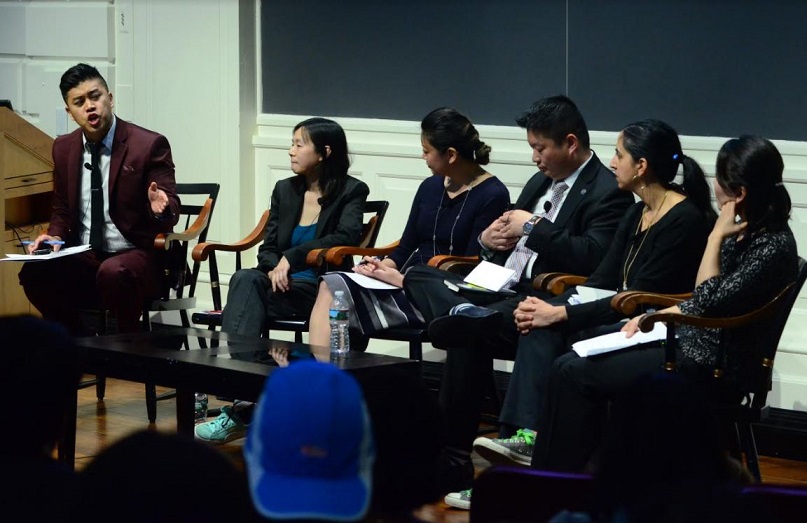Educator Tony DelaRosa on why U.S. classrooms need more male teachers of color

Tony DelaRosa, 31, a Teacher Leadership Coach at Teach for America in Miami-Dade County Public Schools, calls himself an “aspiring anti-racist educator.”
In many of the classrooms he’s walked into, he has witnessed or experienced anti-Asian racism or microaggressions — a kid or two yelling “ching chong ching chong” or asking if his family has brought the coronavirus to Miami. This has persisted for some time exacerbated by the pandemic where the sentiment has escalated to the point of triggering ugly violence.
U.S. classrooms should be the starting place for an anti-racism re-education. Instead, it fosters a condition where teachers of color – males especially – are in the handful. He helped design and found the Asian American Teacher Empowerment, Networking, Development initiative (AATEND). Together with the NYC Mayor’s Office and NYC Men Teach, they have set out to change the lack of support for male teachers of color. Tony has a Master’s in Teaching at Marian University and a Master’s in Education with a focus on Arts Non-Profit Management from Harvard University.
A motivational speaker, DEI consultant, poet, and overall ‘Cultural Broker,’ Tony was born in San Diego to Filipino parents Ruby (from Cavite) and Willy DelaRosa (from Pampanga) – loving parents who have “instilled in their children the Filipino values of hard work, family first, hustle, and teamwork.”
The FilAm: What is an anti-racist educator?
Tony DelaRosa: An anti-racist educator is someone who recognizes that there is no such thing as a non-racist classroom or non-racist school because the U.S. education system is built upon principles of racism and white supremacy. Knowing this, an anti-racist educator actively sharpens their mindsets, skills, and ways of being to combat racism in their class and in their day-to-day with colleagues and administration.
As someone who trains teachers and education leaders, I do this by creating anti-racist goals from the beginning of year, as well as ensuring that my anti-racism includes all forms of racism from gender-racism, sex-racism, class-racism and more.


TF: Tell me about AATEND and the retention initiative for Asian American male teachers?
TDR: In a time where Asian American hate and violence rises, erasure continues, isolation persists, and the model minority myth continues to negatively impact the Asian American community, NYC Men Teach aims at strengthening the connection, capacity building, and co-empowerment of its Asian American men teachers in years 2 – 5 through the Asian American Teacher Empowerment, Networking, Development initiative (AATEND).
I founded AATEND with Richard Haynes, a director at NYC Men Teach. Richard was in search of an Asian American anti-racist strategist who could help bring this idea to life. He found me through a mutual friend, Ron Rapatalo, who referred me due to my work experience leading Asian American initiatives at Harvard and Teach for America.
TF: So, data seems to suggest there are more students of color (8 out of 10) than teachers of color. Why do we need to change the equation?
TDR: We need to change this equation because representation matters. Period. Furthermore, we’ve learned through research the positive impacts of racial matching. Racial matching is when you place students with teachers of the same racial or ethnic background. There are numerous benefits from this type of matching. One example. A recent North Carolina study shows that Black students who were merely exposed to a Black teacher in grades 3-5 significantly reduced the high school dropout rate for Black males. With AATEND, what if this could be true for Asian American students?
A CNN article in 2016 says that “In New York City, where more than 85% of students are Black, Latino/a/x or Asian, fewer than 40% of teachers share these racial and ethnic backgrounds. And this disparity becomes even worse when it includes gender: boys of color in New York City make up 43% of our public school population, yet only 8% of our teachers are men of color.”

TF: What is the situation for Asian American male teachers?
TDR: If education is tied to our future’s employment, and with Asian Americans having the highest unemployment rates amongst racial groups in NYC (source: NBC New York), then why have we been left out of the conversation for so long? This is not new, and the surge of unemployment is due to the pandemic and racism that has plagued our community from the federal level. Another reason we’re seeing this is because Asian Americans have been seen as the model minority, a harmful stereotype that makes us look like we’re always succeeding and doesn’t account for the disaggregated low-income Asian Americans.
I agree that our racial group as a whole, has not been given the proper attention in regards to recruitment, retention, and support across schools nationwide.
TF: Have you experienced being stereotyped as a Filipino American teacher?
TDR: In 2012, when I started teaching in Indianapolis, I remember the first time walking into Indianapolis Public School 103, and a few kids yelled, “We’re going to have a Chinese Mexican teacher — we’re going to be so good at Math this year.” They clearly have not been exposed to a Filipino American teacher, which isn’t their fault because the US education system doesn’t include Asian Americans in the broader narrative of social justice.
My story is but one of many stories from Asian American educators in the U.S. Furthermore, this story only touches the surface between my interactions with youth, and doesn’t account for the racism and micro-aggressions I’ve experienced from adults at these schools. Anti-Asian racism has been an “American tradition” towards people who look like me from the 1882 Chinese Exclusion Act to 1930’s anti-Filipino riots in Watsonville, CA, but today we rewrite this tradition through programs like AATEND.


Website: https://aloe23dragon.flp.com/
https://foreverliving.com/usa/en-us/home
Email: Nqburdick1@gmail.com
© The FilAm 2021










